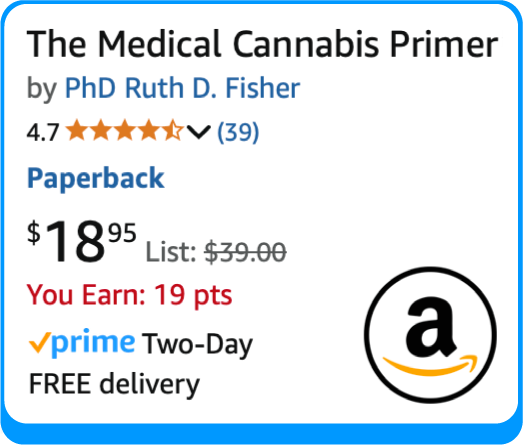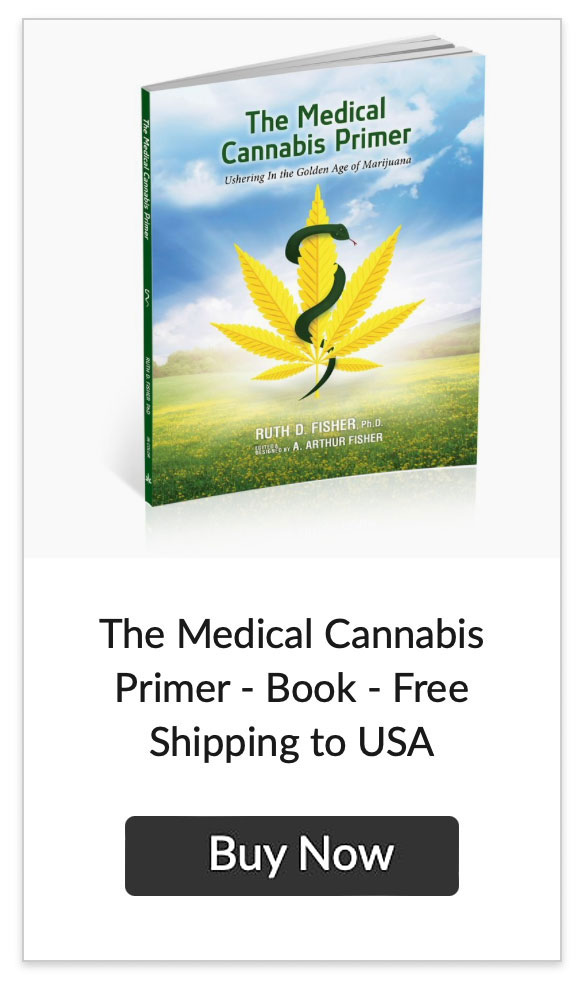Foreword
by A. Arthur Fisher
I first tried marijuana while in college. It seemed like most of the smartest students would get high every now and then. So began a short affinity with the substance. I say short because I quickly realized that I could not study while under the influence. Or work. Or sleep. Of course, back in those days, getting high was just that. If I couldn’t study drunk, why would I think I could do so while high?
As I graduated college and began my move into a more structured, professional life, marijuana was simply no longer of interest. Then in my late 40s, I was diagnosed with multiple sclerosis (MS). It took nearly two years for doctors to figure out what the problem was after my health had suddenly started to deteriorate. My disease onset was fast and aggressive. Before doctors were finally able to make a certain diagnosis, I remember thinking that I was going to die soon. With the help of various experimental techniques, I’ve since been able to get my health under better control.
Although MS has caused me to suffer ambulatory and cognitive symptoms, my biggest problem is pain. Pile disease-damaged nerves on top of a dysfunctional spine, and you’ll have a mess of pain. It wasn’t until three years into this mess that a neurologist finally prescribed me medical marijuana (MMJ). I hadn’t requested the prescription; it was just handed to me, a note that said I have a disease for which the state of California considers marijuana a treatment. It wasn’t technically a prescription, and it didn’t include any instructions.
I remember one day in college when a friend had wiped-out badly on his skateboard. Another student rushed to his rescue with some marijuana. My friend exclaimed, “No! That will only make me dwell on the pain and make it worse.” That experience had miseducated me about cannabis and pain. So, I was a little confused when I got my note.
I can’t think of another time in my life that a doctor prescribed me medication without specific instructions. One of the reasons you go see a doctor is for good medication advice. They prescribe particular compounds with specific dosing information. And you don’t use it differently without an updated prescription. Directions are printed right on the label. And the medication is handed to you by the pharmacist, accompanied by pages of medical information about its effects and side effects.
When you get a note for cannabis, the doctor abdicates all prescribing responsibility, which then becomes your own. Most of us are not well-qualified. But we accept the responsibility because we want the promise of benefit. So begins experimentation.
Smoking is bad for you. And it’s just plain stupid to smoke if you have MS. I started my MMJ experimentation phase with tinctures. I hadn’t used MJ in decades, so I started off mostly with the psycho-inactive compound, cannabidiol (CBD). I read somewhere that this was what I needed. Then, I slowly built up to products with higher levels of THC, that stuff that got us stoned in college. It turns out that you don’t need to get stoned to benefit from compounds in cannabis. If one manages the doses correctly, most applicable medical conditions can be addressed quite well without impairment. (However, some THC is essential if your goal is to alleviate pain.)
I’ve been using MMJ for about three years now, and one thing is abundantly clear to me: cannabis helps control pain. But it took a lot of experimentation with different brands and strengths before I was able to find products which were both effective and easy to tolerate. I need to use while I’m working.
My next realization was that walking into an MMJ dispensary is not like going to the pharmacy. There are no white lab coats, and the tender does not have a degree, certified by a board. Instead, you might find a tie-dyed millennial with dreadlocks, piercings, and tattoos. While I might not have a problem with those socially, they don’t convey the same level of confidence. I do not doubt that the typical tender knows about pot, but I do doubt that he knows about how my damaged central nerves relate to the high cannabigerol content in the brand in the red box. Things are complicated.
If you’re like me, you’re hoping to find medicinal value in this medication, cannabis. Is the whole legalization movement a sham? Could I obtain a therapeutic benefit without getting high? If you really want cannabis to be an effective solution, it’s you who has to assume the responsibility of figuring it all out. The budtender can point you in the right direction if you’re willing to share personal medical conditions with him; I don’t think he’s bound by any HIPAA confidentiality laws.
After studying and experimenting with medical cannabis for a couple of years, I thought I had it mostly figured out. Well at least enough to reduce pain. Then I heard that CBD helps to regenerate damaged nerves, but it took me much longer just to begin to understand that interaction.
I asked my sister, Ruth, to join me in developing a company, CannDynamics, to address these gaping deficiencies. She started doing research. Lots of research. And that led to the creation of this excellent compendium. Her research helped me choose more appropriate cannabis products for all of my personal medical conditions. I’m glad that I have this compendium at my own disposal, and I know it will help others make better choices about their own cannabis use.

